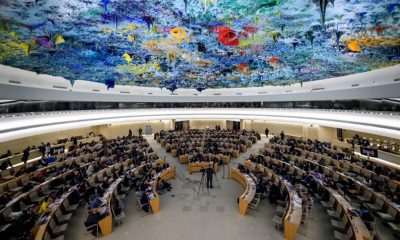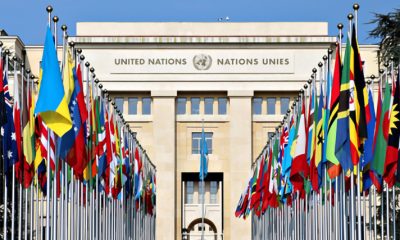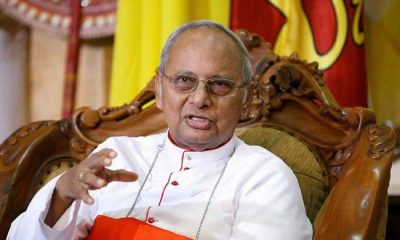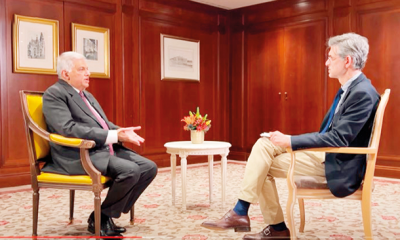Features
UNHRC’s repeated resolutions without resolution

by Neville Ladduwahetty
September is the month when the UN Human Rights Council presents its latest Resolution on Sri Lanka. It is reported that the latest version has graduated from violations of human rights and international humanitarian law to include violations of “economic crimes”. Whatever the scope of the Resolution, the dogged fact remains that every sovereign country is compelled to function within the provisions of its own Constitution, because it is the fundamental law as recognized by the Vienna Convention; a fact unequivocally stated by the President and Foreign Minister of this Government, and repeated earlier by previous governments. This fundamental fact was the rationale for rejecting the former co-sponsored Resolution UNHRC 30/1. Therefore, if the UNHRC is serious about its Resolutions, it has to start with Sri Lanka’s Constitution. Incorporating provisions in Resolutions beyond the provisions of the Constitution become a meaningless and distracting exercise for all concerned, without Resolution.
Chapter III of the Constitution of Sri Lanka is titled “Fundamental Rights”. Under Fundamental Rights, there are NO provisions that address “violations of human rights and violations of international humanitarian law”, nor is there any provision for “economic crimes”. The only provision that is of relevance is under Article 13, and in particular 13 (6) on Fundamental Rights.
This Article 13 (1) states: “No person shall be held guilty of an offence on account of any act or omission which did not, at the time of such act or omission constitute such an offence, and no penalty shall be imposed for any offence more severe than the penalty in force at the time such offence was committed”.
If a person is “guilty of an offence”, the punishment for such an offence should be as contained in Sri Lanka’s Penal Code.
THE PENAL CODE
CHAPTER I
Paragraph 2 (1) of the Penal Code states: “Every person shall be liable to punishment under this Code, and not otherwise, for every act or omission contrary to the provisions thereof, of which he shall be guilty within Sri Lanka.
CHAPTER II
GENERAL EXPLANATIONS
Paragraph 5 states: “Throughout this Code every definition of an offence, every penal provision, and every illustration of every such definition or penal provision shall be understood subject to the exceptions contained in Chapter IV, “General Exceptions”, though these exceptions are not repeated in such definition, penal provision, or illustration”.
ESTABLISHING GUILT
Therefore, any person “guilty of an offence” should conform to the definition stated in the Penal Code of Sri Lanka. However, the Constitution under the second paragraph of Article 13 (6) states: “Nothing in this article shall prejudice the trial and punishment of any person for an acct or omission which, at the time when it was committed, was criminal according to the general principles of law recognized by the community of nations”.
This means that even if a person is NOT guilty of an offence under the Penal Code, he/she could be guilty of a criminal act under provisions “of law recognized by the community of nations”. The issue then resolves itself into identifying the relevant instruments that contain the “general principles of law” to establish guilt for acts that are recognized by the community of nations.
Therefore, under provisions of the Constitution a person could be found guilty of an offence either under provisions of the Penal Code or under provisions contained in instruments of law recognized by the community of nations.
INSTRUMENTS REGOGNIZED by the COMMUNITY of NATIONS
The context for determining whether an offence was committed or not should be based on the acknowledged fact that conflict was an Armed Conflict and therefore the applicable law is International Humanitarian Law; a fact acknowledged by the representatives of the LTTE to the European Court. Furthermore, since the conflict was a Non-International Armed Conflict the applicable legal framework is the Additional Protocol II of 1977. This Protocol is an extension of Common Article 3 of the Geneva Conventions. Although Sri Lanka has not formally ratified Protocol II, it is today accepted as an instrument of international customary law accepted by the community of nations.
Therefore, any questions of guilt for offences committed during the Armed Conflict should either be based on provisions of the Penal Code or procedures laid out in Article 6. “Penal prosecution” of Additional Protocol II. Part II of the Additional Protocol Paragraphs 2 (a) to (h) and 3 (a) to (c) specify what constitutes violations that ‘shall remain prohibited at any time and in any place whatsoever”.
NATIONAL LAWS COMPLEMENTTARY to INTERNATIONAL LAWS
Domestic Laws should take primacy over provisions of international law as recognized by the Rome Statute in its Preamble that states: “Emphasizing that the International Criminal Court established under the Statute shall be complementary to national criminal jurisprudence”. Endorsing the principle of complementarity, Justice A.R.B. Amerasinghe states: “The ultimate goal of international norm-setting is their full and effective implementation through domestic procedures without the need for recourse to international mechanisms. In fact, access to international mechanisms is usually limited and may be resorted to only if domestic mechanisms are not available or inadequate…. The effective protection of human rights depends in the first instance upon national courts, legislatures, and public officers, and only in the last resort upon the international machinery and fora” (Amerasinghe, “Our Fundamental Rights of Personal Security and Physical Liberty” p. 2)
Therefore, it is only in instances where acts committed that cannot be categorized as violations under the Penal Code, that provisions contained in Additional Protocol II under Article 6: “Penal prosecution” should be followed.
Article 6: Penal prosecutions
1. “This Article applies to the prosecution and punishment of criminal offences related to the armed conflict”.
2. “No sentence shall be passed and no penalty shall be executed on a person found guilty of an offence except pursuant to a conviction pronounced by a court offering the essential guarantees of independence and impartiality”. In particular:
(a) “The procedure shall provide for an accused to be informed without delay of the particulars of the offence alleged against him and shall afford the accused before and during his trial all necessary rights and means of defence”;
(b) “No one shall be convicted of an offence except on the basis of individual penal responsibility”;
(c) “No one shall be held guilty of any criminal offence on account of any act or omission which did not constitute a criminal offence, under the law, at the time when it was committed; nor shall a heavier penalty be imposed than that which was applicable at the time when the criminal offence was committed; if, after the commission of the offence, provision is made by law for the imposition of a lighter penalty, the offender shall benefit thereby”;
(d) “Anyone charged with an offence is presumed innocent until proved guilty according to law”;
(e) Anyone charged with an offence shall have the right to be tried in his presence”;
(f) “No one shall be compelled to testify against himself or to confess guilt”.
3. “A convicted person shall be advised on conviction of his judicial and other remedies and of the time-limits within which they may be exercised”.
4. “The death penalty shall not be pronounced on persons who were under the age of eighteen years at the time of the offence and shall not be carried out on pregnant women or mothers of young children”.
5. “At the end of hostilities, the authorities in power shall endeavour to grant the broadest possible amnesty to persons who have participated in the armed conflict, or those deprived of their liberty for reasons related to the armed conflict, whether they are interned or detained”.
Article 25 (2) of the Rome Statute states: “A person who commits within the jurisdiction of the Court shall be individually responsible and liable for punishment in accordance with the Statute”
The material presented relating to Penal prosecutions contained in the Additional Protocol II and the Rome Statue clearly establish that the procedures that should be followed to establish guilt SHOULD be based on “individual penal responsibility”.
Furthermore, since guilt is based on “individual penal responsibility” Command Responsibility is not recognized either by Protocol II or the Rome Statute.
Under the circumstances blacklisting entire fighting divisions reflects ignorance of International Humanitarian Law applicable to Non-International Armed Conflict.
However, since the Protocol II does not specify what the punishment should be for the offences committed, punishment for such should be guided by provisions in Sri Lanka’s Penal Code. This is in keeping with the recognized principle of complementarity that recognizes the primacy of national laws that complement international laws.
DOMESTIC MECHANISM
During the course of the Foreign Minister Ali Sabry’s address, at the 51st Secession of the UN Human Rights Council, he stated: “We endeavor to establish a credible truth-seeking mechanism within the framework of the Constitution. The contours of a model that would suit the particular conditions of Sri Lanka are under discussion”. When the Minister of Justice, Prison Affairs and Constitutional Reforms, Dr. Wijeyedasa Rajapakse, was asked by the Sunday Observer “about the possibility of the international mechanism coming with hybrid Courts to address war crimes in Sri Lanka, he is reported to have stated: “It is likely. That is why we are going to propose the setting up of a domestic truth-seeking mechanism with special courts that can respond to rights violation cases involving the LTTE and the military. We are currently discussing the situation with countries such as the US, China, UK, and the European Union to promote the domestic mechanism.” (Sunday Observer, September 18, 2022).
Establishing the “Truth” by means of a truth-seeking domestic mechanism depends on the degree of certainty of evidence presented. Such degrees of certainty are needed whether “truth” is established by existing provisions or by fresh domestic mechanisms. However, the intention to set up “special courts” that could respond to violations by the LTTE or the military would then have to function alongside existing High Courts that are in place under the 13th Amendment to the Constitution that are mandated to address violations specified in the Penal Code. Whether such an arrangement is constitutionally acceptable or not is a matter that needs to be explored.
It is apparent from these comments that the reason to endeavor the setting up a “domestic truth-seeking mechanism with special courts” is to satisfy US, China, UK and the European Union with whom Sri Lanka is having discussions, that Sri Lanka is serious about addressing possible human rights law and humanitarian law violations that could have occurred during the Armed Conflict. During these discussions it would make a significant difference to these discussions if Sri Lanka makes them aware of the outstanding determinations made by the Supreme Court of Sri Lanka relating to Human Rights violations.
The fact that the UNHRC and the Core Group backed by local entities seem to be ignorant of such determinations by the Supreme Court of Sri Lanka, and the fact that the scope of national laws complemented by international laws do already exist and have the capacity to address alleged violations, is because Sri Lanka has made no attempt to present them. This may also be the possible reason for demanding hybrid courts to address violations, if any, that may have occurred during the armed conflict.
EXISTING DOMESTIC MECHANISMS to ADDRESS VIOLATIONS
Article 154P (1) of the 13th Amendment to the Constitution states: “There shall be a High Court for each Province …Each such High Court shall be designated as the High Court of the relevant Province”.
Article 154P (6) of the 13th Amendment states: “Subject to the provisions of the Constitution and any law, any person aggrieved by a final order, judgment or sentence of any such Court in the exercise of its jurisdiction under paragraph (3) (b) or (3) (c) or (4) may appeal therefrom to the Court of Appeal in accordance with Article 138”.
In addition to such avenues to pursue the interests of aggrieved parties relating to investigations such persons could lodge a complaint with Sri Lanka’s Human Rights Council under provisions of Part II “POWERS OF INVESTIGATION” of the Human Rights Commission of Sri Lanka Act, No. 21 of 1996, PART II POWERS OF INVESTIGATION OF THE COMMISSION.
Paragraph 14 of the above Act states: “The Commission may, on its own motion or on a complaint made to it by an aggrieved person or group of persons or a person acting on behalf of an aggrieved person or a group of persons, investigate an allegation at the infringement or imminent infringement of a fundamental right of such person or group of persons caused”.
It is therefore crystal clear that provisions currently exist between provisions in the 13th Amendment to the Constitution and the remit of the Sri Lanka’s Human Rights Commission for an aggrieved party to seek redress in relation to serious violations. One such landmark judgment given by the Court of Appeal relating to Disappearances is given below, in order to demonstrate that the existing jurisprudence is sufficient to address issues relating to serious violations.
DISAPPEARANCES
K. LEEDA VIOLET AND OTHERS V T.P. VIDANAPATHIRANA AND OTHERS H.C.A.164/89, H.C.A.171/89 AND H.C.A.166/89 DECIDED ON 2 DECEMBER 1994.
S.N.SILVA.J. PRESIDENT OF THE COURT OF APPEAL
“In HCA 164/89 the Petitioner Leeda Violet, being the mother of the corpus, Y. Wimalpala, father of the corpus and T. Lilinona gave in support of the petition. According to their evidence the corpus, being the eldest son of the Petitioner and her husband Wimalpala, was 26 years of age at the time of his arrest…. At about 4.30 p.m. a party of police officers came in several vehicles. Thereafter he (the officer in-charge) arrested the persons who were near the shop selling fishing gear. Some persons who were on the beach were also arrested… Those arrested were asked to kneel on the road. Thereafter the 1st Respondent asked those persons to get into the vehicles and took them to the Dikwella Police Station. It is stated that about 30 persons were arrested. The Petitioners in HCA 164/89 and HCA 171/89 followed the police vehicles and went up to the Police Station”.
The final paragraph of the judgment states: “The Petitioners filed these applications in April 1989. There were initial hearings before this Court and protracted inquiries before the Magistrate Court. Thereafter the cases were adjourned for further hearing before this Court. It is obvious that the Petitioners have incurred heavy expenditure in these proceedings. They have boldly pursued these applications, which is commendable conduct considering that the 1st Respondent continues to hold office…. Several applications with regard to other disappearances reported from the same place have been dismissed for non-prosecution. In these circumstances as a measure of exemplary costs, I direct that the Respondent to pay each petitioner in the above application a sum of Rs. 100,000/= as exemplary costs…. Also direct the Registrar of this Court to forward copies of the proceedings recorded in the Magistrate’s Court to the Inspector General of Police who is hereby directed to consider the evidence recorded as information of the commission of cognizable offences. He will take necessary steps to conduct proper investigations and to take steps according to the law…” (A.R.B Amerasinghe, Ibid p. 336-340)
TORTURE
On the topic of Torture, Cruel, Inhuman, Degrading Treatment or Punishment, Justice Amerasinghe in the book cited above states: “The Supreme Court of Sri Lanka has over and over again emphasized that even persons whose records are not particularly meritorious should enjoy the Constitutional Guarantee of personal liberty and security and that even ‘notorious’ or hard core criminals should not be subject to torture, inhuman or degrading treatment or punishment” (Ibid, p. 29).
THE QUESTION of PROOF
“In Malinda Channa Pieris and others v A.G. and others, it was pointed out that, having regard to the gravity of the matter in issue, a high degree of certainty is required before the balance of probability might be said to tilt in favoure of a petitioner endeavouring to discharge his burden of proving that he was subjected to torture or to cruel, inhuman or degrading treatment or punishment; and unless has adduced sufficient evidence to satisfy the Court…” (Ibid, p.43).
Internationally too, the allegation must be proved before the relevant Article is held to have been violated. Thus for instance in Fillastre v Bolivia, the UN Committee on Human Rights held that there was no violation of Article 10 of the ICCPR because the allegations that the conditions of detention were inhuman and degrading had not been substantiated or corroborated” (Ibid, p. 44).
MEANING of ARREST
Article 13 (1) of the Constitution states: “No person shall be arrested except according to procedures established by law. Any person arrested shall be informed of the reason for his arrest”.
Article 13 (2) states: “Every person held in custody, detained or otherwise deprived of personal liberty shall be brought before the judge of the nearest competent court according to procedures established by law, and shall not be further held in custody, detained or deprived of personal liberty except upon and in terms of the order of such judge made in accordance with procedures established by law”.
“So long as the grounds for arrest are made known, the Constitutional requirement that reason for arrest should be given will be satisfied. The police do not have to quote chapter and verse from statutes and legal literature to justify the arrest. There is no obligation on the police to quote the law applicable”, said Samarakoon C.J. “On the other hand… He must be given the grounds – the material facts and particulars – for his arrest, for it is then that the man will have information that will enable him to take meaningful steps towards regaining his liberty” (Ibid, p. 115).
CONCLUSION
The Foreign Minister Ali Sabry during the course of his address, at the 51st Secession of the UN Human Rights Council, stated: “We endeavor to establish a credible truth-seeking mechanism within the framework of the Constitution. The contours of a model that would suit the particular conditions of Sri Lanka are under discussion”. Whether the intended mechanism is compatible with existing systems under the 13th Amendment is an issue that needs resolution.
Establishing the “truth”, whatever the mechanism, depends on the evidence presented because only evidence that has a “high degree of credibility” is what is accepted as evidence both nationally and internationally. For instance, in Fillastre v Bolivia, the UN Committee on Human Rights held that there was no violation of Article 10 of the ICCPR because the allegations that the conditions of detention were inhuman and degrading had not been substantiated or corroborated” (A.R. B. Amerasinghe, “Our Fundamental Rights of Personal Security and Physical Liberty” p. 44).
Such evidence could be presented to any of the High Courts established under the 13th Amendment or the new Domestic Mechanism contemplated. For instance, the landmark judgment presented above, with the decision by the then President of the Court of Appeal, S.N. Silva J. reflects the scope of existing national mechanisms to address serious violations, regardless of whether or not they come within the rubric of human rights or humanitarian law. Furthermore, an aggrieved party who is not satisfied with the diligence of the investigations could appeal to Sri Lanka’s Human Rights Commission to undertake under provisions of Part II “POWERS OF INVESTIGATION” of the Human Rights Commission of Sri Lanka Act, No. 21 of 1996, PART II POWERS OF INVESTIGATION OF THE COMMISSION Therefore, aggrieved parties should be encouraged and urged to exploit the full potential of existing domestic mechanisms to redress their grievances.
If the evidence reaches the standard of “high degree of credibility”, the next step is for Domestic mechanisms provided in the Constitution to apply, and the procedures for prosecution and punishment in keeping with provisions of Sri Lanka’s Penal Code, to proceed. However, if the evidence relates to violations outside its scope, they could still apply to acts that are “recognized by the community of nations” as per the second paragraph of Article 13 (6) of the Constitution. The evidence, however must relate to “individual penal responsibility”, as called for by the Additional Protocol II applicable to the
Non-International Armed Conflict and by the Rome Statute. Therefore, the call to blacklist entire fighting divisions reflects a total ignorance of such internationally recognized provisions. Furthermore, Additional Protocol Ii does not recognize Command Responsibility.
As for the punishment, what is provided nationally is Sri Lanka’s Penal Code. Therefore, even if an individual is guilty for a violation and is recognized as such by the community of nations, the punishment has to be in keeping with provisions in Sri Lanka’s Penal Code.
Presented above are topics such as DISAPPEARANCES, TORTURE, THE QUESTION of PROOF and MEANING of ARREST contained in Justice A.R.B. Amarasinghe’s book titled “Our Fundamental Rights of Personal Security and Physical Liberty” (1995) and how they were addressed under provisions of existing Domestic Mechanisms in Sri Lanka.
The case presented under DISAPPEARANCES was first filed in April 1989 and the decision was made in December 1994; a matter of 5 years and 8 months. It is most likely that the evidence gathered by the Office of the UNHRC is several decades old. How such evidence would stand the test of “high degree of credibility”, before an incident could be categorized as a violation is a factor that could be challenged.
Few are aware of these facts, and least of all the UNHRC. Instead of pleading our case in Geneva, this body of evidence should be brought to the attention of the UNHRC, Diplomatic Representatives in Sri Lanka and to those who are committed to Human Rights issues. In addition, the Government should document regularly the current status of every complaint filed with the High Courts or any of the Superior Courts relating to human rights and humanitarian law violations to demonstrate the manner in which the domestic system is working. The fact that achievements gained through Domestic Mechanisms have not received the publicity it deserves has resulted in acquiring the image that impunity reigns in Sri Lanka.
Features
Why Sri Lanka Still Has No Doppler Radar – and Who Should Be Held Accountable
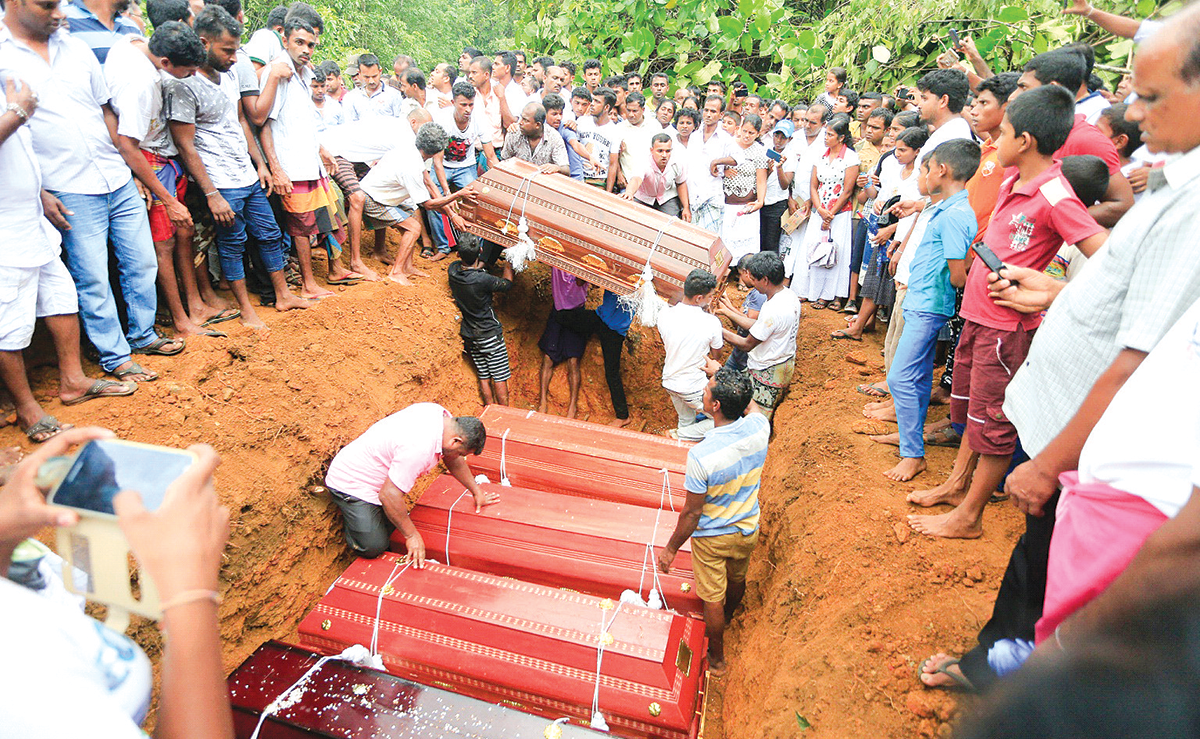
Eighteen Years of Delay:
Cyclone Ditwah has come and gone, leaving a trail of extensive damage to the country’s infrastructure, including buildings, roads, bridges, and 70% of the railway network. Thousands of hectares of farming land have been destroyed. Last but not least, nearly 1,000 people have lost their lives, and more than two million people have been displaced. The visuals uploaded to social media platforms graphically convey the widespread destruction Cyclone Ditwah has caused in our country.
The purpose of my article is to highlight, for the benefit of readers and the general public, how a project to establish a Doppler Weather Radar system, conceived in 2007, remains incomplete after 18 years. Despite multiple governments, shifting national priorities, and repeated natural disasters, the project remains incomplete.
Over the years, the National Audit Office, the Committee on Public Accounts (COPA), and several print and electronic media outlets have highlighted this failure. The last was an excellent five-minute broadcast by Maharaja Television Network on their News First broadcast in October 2024 under a series “What Happened to Sri Lanka”
The Agreement Between the Government of Sri Lanka and the World Meteorological Organisation in 2007.
The first formal attempt to establish a Doppler Radar system dates back to a Trust Fund agreement signed on 24 May 2007 between the Government of Sri Lanka (GoSL) and the World Meteorological Organisation (WMO). This agreement intended to modernize Sri Lanka’s meteorological infrastructure and bring the country on par with global early-warning standards.
The World Meteorological Organisation (WMO) is a specialized agency of the United Nations established on March 23, 1950. There are 193 member countries of the WMO, including Sri Lanka. Its primary role is to promote the establishment of a worldwide meteorological observation system and to serve as the authoritative voice on the state and behaviour of the Earth’s atmosphere, its interaction with the oceans, and the resulting climate and water resources.
According to the 2018 Performance Audit Report compiled by the National Audit Office, the GoSL entered into a trust fund agreement with the WMO to install a Doppler Radar System. The report states that USD 2,884,274 was deposited into the WMO bank account in Geneva, from which the Department of Metrology received USD 95,108 and an additional USD 113,046 in deposit interest. There is no mention as to who actually provided the funds. Based on available information, WMO does not fund projects of this magnitude.
The WMO was responsible for procuring the radar equipment, which it awarded on 18th June 2009 to an American company for USD 1,681,017. According to the audit report, a copy of the purchase contract was not available.
Monitoring the agreement’s implementation was assigned to the Ministry of Disaster Management, a signatory to the trust fund agreement. The audit report details the members of the steering committee appointed by designation to oversee the project. It consisted of personnel from the Ministry of Disaster Management, the Departments of Metrology, National Budget, External Resources and the Disaster Management Centre.
The Audit Report highlights failures in the core responsibilities that can be summarized as follows:
· Procurement irregularities—including flawed tender processes and inadequate technical evaluations.
· Poor site selection
—proposed radar sites did not meet elevation or clearance requirements.
· Civil works delays
—towers were incomplete or structurally unsuitable.
· Equipment left unused
—in some cases for years, exposing sensitive components to deterioration.
· Lack of inter-agency coordination
—between the Meteorology Department, Disaster Management Centre, and line ministries.
Some of the mistakes highlighted are incomprehensible. There is a mention that no soil test was carried out before the commencement of the construction of the tower. This led to construction halting after poor soil conditions were identified, requiring a shift of 10 to 15 meters from the original site. This resulted in further delays and cost overruns.
The equipment supplier had identified that construction work undertaken by a local contractor was not of acceptable quality for housing sensitive electronic equipment. No action had been taken to rectify these deficiencies. The audit report states, “It was observed that the delay in constructing the tower and the lack of proper quality were one of the main reasons for the failure of the project”.
In October 2012, when the supplier commenced installation, the work was soon abandoned after the vehicle carrying the heavy crane required to lift the radar equipment crashed down the mountain. The next attempt was made in October 2013, one year later. Although the equipment was installed, the system could not be operationalised because electronic connectivity was not provided (as stated in the audit report).
In 2015, following a UNOPS (United Nations Office for Project Services) inspection, it was determined that the equipment needed to be returned to the supplier because some sensitive electronic devices had been damaged due to long-term disuse, and a further 1.5 years had elapsed by 2017, when the equipment was finally returned to the supplier. In March 2018, the estimated repair cost was USD 1,095,935, which was deemed excessive, and the project was abandoned.
COPA proceedings
The Committee on Public Accounts (COPA) discussed the radar project on August 10, 2023, and several press reports state that the GOSL incurred a loss of Rs. 78 million due to the project’s failure. This, I believe, is the cost of constructing the Tower. It is mentioned that Rs. 402 million had been spent on the radar system, of which Rs. 323 million was drawn from the trust fund established with WMO. It was also highlighted that approximately Rs. 8 million worth of equipment had been stolen and that the Police and the Bribery and Corruption Commission were investigating the matter.
JICA support and project stagnation
Despite the project’s failure with WMO, the Japan International Cooperation Agency (JICA) entered into an agreement with GOSL on June 30, 2017 to install two Doppler Radar Systems in Puttalam and Pottuvil. JICA has pledged 2.5 billion Japanese yen (LKR 3.4 billion at the time) as a grant. It was envisaged that the project would be completed in 2021.
Once again, the perennial delays that afflict the GOSL and bureaucracy have resulted in the groundbreaking ceremony being held only in December 2024. The delay is attributed to the COVID-19 pandemic and Sri Lanka’s economic crisis.
The seven-year delay between the signing of the agreement and project commencement has led to significant cost increases, forcing JICA to limit the project to installing only one Doppler Radar system in Puttalam.
Impact of the missing radar during Ditwah
As I am not a meteorologist and do not wish to make a judgment on this, I have decided to include the statement issued by JICA after the groundbreaking ceremony on December 24, 2024.
“In partnership with the Department of Meteorology (DoM), JICA is spearheading the establishment of the Doppler Weather Radar Network in the Puttalam district, which can realize accurate weather observation and weather prediction based on the collected data by the radar. This initiative is a significant step in strengthening Sri Lanka’s improving its climate resilience including not only reducing risks of floods, landslides, and drought but also agriculture and fishery“.
Based on online research, a Doppler Weather Radar system is designed to observe weather systems in real time. While the technical details are complex, the system essentially provides localized, uptotheminute information on rainfall patterns, storm movements, and approaching severe weather. Countries worldwide rely on such systems to issue timely alerts for monsoons, tropical depressions, and cyclones. It is reported that India has invested in 30 Doppler radar systems, which have helped minimize the loss of life.
Without radar, Sri Lanka must rely primarily on satellite imagery and foreign meteorological centres, which cannot capture the finescale, rapidly changing weather patterns that often cause localized disasters here.
The general consensus is that, while no single system can prevent natural disasters, an operational Doppler Radar almost certainly would have strengthened Sri Lanka’s preparedness and reduced the extent of damage and loss.
Conclusion
Sri Lanka’s inability to commission a Doppler Radar system, despite nearly two decades of attempts, represents one of the most significant governance failures in the country’s disastermanagement history.
Audit findings, parliamentary oversight proceedings, and donor records all confirm the same troubling truth: Sri Lanka has spent public money, signed international agreements, received foreign assistance, and still has no operational radar. This raises a critical question: should those responsible for this prolonged failure be held legally accountable?
Now may not be the time to determine the extent to which the current government and bureaucrats failed the people. I believe an independent commission comprising foreign experts in disaster management from India and Japan should be appointed, maybe in six months, to identify failures in managing Cyclone Ditwah.
However, those who governed the country from 2007 to 2024 should be held accountable for their failures, and legal action should be pursued against the politicians and bureaucrats responsible for disaster management for their failure to implement the 2007 project with the WMO successfully.
Sri Lanka cannot afford another 18 years of delay. The time for action, transparency, and responsibility has arrived.
(The views and opinions expressed in this article are solely those of the author and do not necessarily reflect the policy or position of any organization or institution with which the author is affiliated).
By Sanjeewa Jayaweera
Features
Ramifications of Trump Corollary
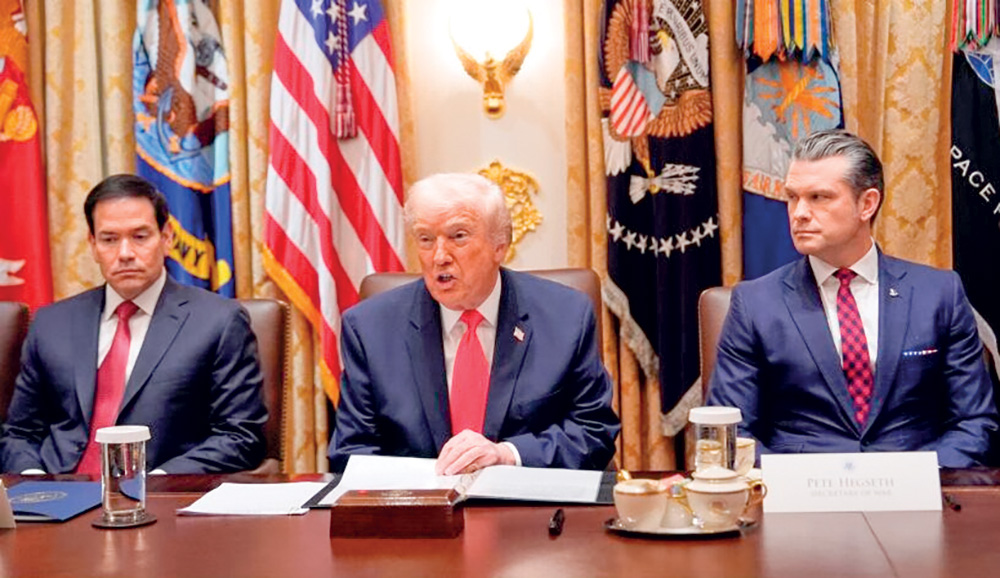
President Trump is expected to close the deal on the Ukraine crisis, as he may wish to concentrate his full strength on two issues: ongoing operations in Venezuela and the bolstering of Japan’s military capabilities as tensions between China and Japan over Taiwan rise. Trump can easily concede Ukraine to Putin and refocus on the Asia–Pacific and Latin America. This week, he once again spilled the beans in an interview with Politico, one of the most significant conversations ever conducted with him. When asked which country currently holds the stronger negotiating position, Trump bluntly asserted that there could be no question: it is Russia. “It’s a much bigger country. It’s a war that should’ve never happened,” he said, followed by his usual rhetoric.
Meanwhile, US allies that fail to adequately fund defence and shirk contributions to collective security will face repercussions, Secretary of War Pete Hegseth declared at the 2025 Reagan National Defense Forum in Simi Valley, California. Hegseth singled out nations such as South Korea, Israel, Poland, and Germany as “model allies” for increasing their commitments, contrasting them with those perceived as “free riders”. The message was unmistakably Trumpian: partnerships are conditional, favourable only to countries that “help themselves” before asking anything of Washington.
It is in this context that it becomes essential to examine the Trump administration’s National Security Strategy, issued last week, in order to consider how it differs from previous strategies and where it may intersect with current US military practice.
Trump’s 2025 National Security Strategy is not merely another iteration of the familiar doctrine of American primacy; it is a radical reorientation of how the United States understands itself, its sphere of influence, and its role in the world. The document begins uncompromisingly: “The purpose of foreign policy is the protection of core national interests; that is the sole focus of this strategy.” It is the bluntest opening in any American NSS since the document became a formal requirement in 1987. Whereas previous strategies—from Obama to Biden—wrapped security in the language of democracy promotion and multilateralism, Trump’s dispenses entirely with the pretence of universality. What matters are American interests, defined narrowly, almost corporately, as though the United States were a shareholder entity rather than a global hegemon.
It is here that the ghost of Senator William Fulbright quietly enters, warning in 1966 that “The arrogance of power… the belief that we are uniquely qualified to bring order to the world, is a dangerous illusion.” Fulbright’s admonition was directed at the hubris of Vietnam-era expansionism, yet it resonates with uncanny force in relation to Trump’s revived hemispheric ambitions. For despite Trump’s anti-globalist posture, his strategy asserts a unique American role in determining events across two oceans and within an entire hemisphere. The arrogance may simply be wearing a new mask.
Nowhere is this revisionist spirit more vivid than in the so-called “Trump Corollary to the Monroe Doctrine”, perhaps the most controversial American hemispheric declaration since Theodore Roosevelt’s time. The 2025 NSS states without hesitation that “The United States will reassert and enforce the Monroe Doctrine to restore American preeminence in the Western Hemisphere.” Yet unlike Roosevelt, who justified intervention as a form of pre-emptive stabilisation, Trump wraps his corollary in the language of sovereignty and anti-globalism. The hemispheric message is not simply that outside powers must stay out; it is that the United States will decide what constitutes legitimate governance in the region and deny “non-Hemispheric competitors the ability to position forces or other threatening capabilities… in our Hemisphere”.
This wording alone has far-reaching implications for Venezuela, where US forces recently seized a sanctioned supertanker as part of an escalating confrontation with the Maduro government. Maduro, emboldened by support from Russia, Iran, and China’s so-called shadow fleet, frames Trump’s enforcement actions as piracy. But for Trump, this is precisely the point: a demonstration of restored hemispheric authority. In that sense, the 2025 NSS may be the first strategic document in decades to explicitly set the stage for sustained coercive operations in Latin America. The NSS promises “a readjustment of our global military presence to address urgent threats in our Hemisphere.” “Urgent threats” is vague, but in practical military planning, vagueness functions as a permission slip. It is not difficult to see how a state accused of “narco-terrorism” or “crimes against humanity” could be fitted into the category.
The return to hemispheric dominance is paired with a targeted shift in alliance politics. Trump makes it clear that the United States is finished subsidising alliances that do not directly strengthen American security. The NSS lays out the philosophy succinctly: “The days of the United States propping up the entire world order like Atlas are over.” This is a direct repudiation of the language found in Obama’s 2015 NSS, which emphasised that American leadership was indispensable to global stability. Trump rejects that premise outright. Leadership, in his framing, is merely leverage. Allies who fail to meet burden expectations will lose access, influence, and potentially even protection. Nowhere is this more evident than in the push for extraordinary defence spending among NATO allies: “President Trump has set a new global standard with the Hague Commitment… pledging NATO countries to spend 5 percent of GDP on defence.”
In turn, US disengagement from Europe becomes easier to justify. While Trump speaks of “negotiating an expeditious cessation of hostilities in Ukraine”, it requires little sophistication to decode this as a form of managed abandonment—an informal concession that Russia’s negotiating position is stronger, as Trump told Politico. Ukraine may well become a bargaining chip in the trade-off between strategic theatres: Europe shrinks, Asia and Latin America expand. The NSS’s emphasis on Japan, Taiwan, and China is markedly sharper than in 2017.
China looms over the 2025 NSS like an obsession, mentioned over twenty times, not merely as a competitor but as a driving force shaping American policy. Every discussion of technology, alliances, or regional security is filtered through Beijing’s shadow, as if US strategy exists solely to counter China. The strategy’s relentless focus risks turning global priorities into a theatre of paranoia, where the United States reacts constantly, defined less by its own interests than by fear of what China might do next.
It is equally striking that, just nine days after Cyclone Ditwah, the US Indo-Pacific Command deployed two C130 aircraft—capable of landing at only three locations in Sri Lanka, well away from the hardest-hit areas—and orchestrated a highly choreographed media performance, enlisting local outlets and social media influencers seemingly more concerned with flaunting American boots on the ground than delivering “urgent” humanitarian aid. History shows this is not unprecedented: US forces have repeatedly arrived under the banner of humanitarian assistance—Operation Restore Hope in Somalia (1992) later escalated into full security and combat operations; interventions in Haiti during the 1990s extended into long-term peacekeeping and training missions; and Operation United Assistance in Liberia (2014) built a lasting US operational presence beyond the Ebola response.
Trump’s NSS, meanwhile, states that deterring conflict in East Asia is a “priority”, and that the United States seeks to ensure that “US technology and US standards—particularly in AI, biotech, and quantum computing—drive the world forward.” Combined with heightened expectations of Japan, which is rapidly rearming, Trump’s strategic map shows a clear preference: if Europe cannot or will not defend itself, Asia might.
What makes the 2025 NSS uniquely combustible, however, is the combination of ideological framing and operational signalling. Trump explicitly links non-interventionism, long a theme of his political base, to the Founders’ moral worldview. He writes that “Rigid adherence to non-interventionism is not possible… yet this predisposition should set a high bar for what constitutes a justified intervention.”
The Trump NSS is both a blueprint and a warning. It signals a United States abandoning the liberal internationalist project and embracing a transactional, hemispherically focussed, sovereignty-first model. It rewrites the Monroe Doctrine for an age of great-power contest, but in doing so resurrects the very logics of intervention that past presidents have regretted. And in the background, as Trump weighs the cost of Ukraine against the allure of a decisive posture in Asia and the Western Hemisphere, the world is left to wonder whether this new corollary is merely rhetorical theatre or the prelude to a new era of American coercive power. The ambiguity is deliberate, but the direction of travel is unmistakable.
[Correction: In my column last week, I incorrectly stated that India–Russia trade in FY 2024 25 was USD 18 billion; the correct figure is USD 68.7 billion, with a trade deficit of about USD 59 billion. Similarly, India recorded a goods trade surplus of around USD 41.18 billion with the US, not a deficit of USD 42 billion, with exports of USD 86.51 billion and imports of USD 45.33 billion. Total remittances to India in FY 2024 25 were roughly USD 135.46 billion, including USD 25–30 billion from the US. Apologies for the error.]
by Nilantha Ilangamuwa
Features
MEEZAN HADJIAR

selfmade businessman who became one of the richest men in the Central Province
I am happy that a book about the life and contribution of Sathkorale Muhamdiramlagedara Segu Abdul Cader Hajiar Mohamed Mohideen better known as Meezan Hadjiar or Meezan Mudalali of Matale [1911—1964] written by Mohammed Fuaji -a former Principal of Zahira College Matale, has now been published by a group of his admirers and relatives. It is a timely addition to the history of Matale district and the Kandyan region which is yet to be described fully as forming a part of the modern history of our country. Coincidentally this book also marks the centenary of Meezan Hadjiars beginning of employment in Matale town which began in 1925.
Matale which was an outlier in the Kandyan Kingdom came into prominence with the growth of plantations for coffee and, after the collapse of the coffee plantations due to the ‘coffee blight’ , for other tree crops . Coffee was followed by the introduction of tea by the early British investors who faced bankruptcy and ruin if they could not quickly find a substitute beverage for coffee.They turned to tea.
The rapid opening of tea plantations in the hill country demanded a large and hardworking labour force which could not be found domestically. This led to the indenturing of Tamil labour from South India on a large scale. These helpless workers were virtually kidnapped from their native villages in India through the Kangani system and they were compelled to migrate to our hill country by the British administration .
The route of these indentured workers to the higher elevations of the hill country lay through Matale and the new plantation industry developed in that region thereby dragging it into a new commercial culture and a cash economy. New opportunities were opened up for internal migration particularly for the more adventurous members of the Muslim community who had played a significant role in the Kandyan kingdom particularly as traders,transporters,medical specialists and military advisors.
Diaries of British officials like John D’oyly also show that the Kandyan Muslims were interlocutors between the Kandyan King and British officials of the Low Country as they had to move about across boundaries as traders of scarce commodities like salt, medicines and consumer articles for the Kandyans and arecanuts, gems and spices for the British. Even today there are physical traces of the ‘’Battal’’or caravans of oxen which were used by the Muslims to transport the above mentioned commodities to and from the Kandyan villages to the Low country. Another important facet was that Kandyan Muslims were located in villages close to the entrances to the hill country attesting to their mobility unlike the Kandyan villagers.
Thus Akurana, Galagedera, Kadugannawa, Hataraliyadde and Mawanella which lay in the pathways to enter the inner territory of the Kings domain were populated by ‘Kandyan Muslims’ who had the ear of the King and his high officials. The’’ Ge’’ names and the honorifics given by the King were a testament to their integration with the Sinhala polity. Meezan Hadjiars’’ Ge ‘‘name of Sathkorale Mohandiramlage denotes the mobility of the family from Sathkorale, an outlier division in the Kandyan Kingdom, and Mohandiramlage attests to the higher status in the social hierarchy which probably indicated that his forebears were honoured servants of the king.
Meezan Hadjiar [SM Mohideen] was born and bred in Kurugoda which is a small village in Akurana in Kandy district. He belonged to the family of Abdul Cader who was a patriarch and a well known religious scholar. Cader’s children began their education in the village school but at the age of 12 young Mohideen left his native village to apprentice under a relative who had a business establishment in the heart of Matale town which was growing fast due to the economic boom. It must be stated here that this form of ‘learning the ropes’ as an apprentice’was a common path to business undertaken by many of the later Sri Lankan tycoons of the pre-independence era.
But he did not remain in that position for long .When his mentor failed in his business of trading in cocoa, cardamoms, cloves and arecanuts and wanted to close up his shop young Mohideen took over and eventually made a great success of it. His enterprise succeeded because he was able to earn the trust of both his buyers and sellers. He befriended Sinhalese and Tamil producers and the business he improved beyond measure took on the name of Meezan Estates Ltd [The scales] and Mohideen soon became famous as Meezan Mudalali – perhaps the most successful businessman of his time in Matale. He expanded his business interests to urban real estate as well as tea and rubber estates. Soon he owned over 3,000 acres of tea estates making him one of the richest men in the Central Province.
With his growing influence Meezan spent generously on charitable activities including funding a water scheme for his native village of Kurugoda also serving adjoining villages like Pangollamada located in Akurana. He also gave generously to Buddhist causes in Matale together with other emerging low country businessmen like Gunasena and John Mudalali.
Matale was well known as a town in which all communities lived in harmony and tended to help each other. As a generous public figure he became strong supporter of the UNP and a personal friend of its leaders like Dudley Senanayake and Sir John Kotelawela. UNP candidates for public office-both in the Municipality and Parliament were selected in consultation with Meezan who also bankrolled them during election time. He himself became a Municipal councillor. The Aluvihares of several generations had close links with him. it was Meezan who mentored ACS Hameed – a fellow villager from Kurugoda – and took him to the highest echelons of Sri Lankan politics as Minister of Foreign Affairs. He was a supporter and financier of the UNP through thick and thin.
Though his premature death at the age 53 in 1965 saved him from the worst political witch hunts under SWRD Bandaranaike who was his personal friend it was after 1970 and the Coalition regime that Meezan’s large family were deprived of their livelihood by the taking over of all their estates. Fortunately many of his children were well educated and could hold on till relief was given by President Premadasa despite the objections of their father’s erstwhile protégé ACS Hameed who surprisingly let them down badly.
It is only fitting that we, even a hundred years later, now commemorate a great self made Sri Lankan business magnate and generous contributor to all religious and social causes of his time. His name became synonymous with enterprise in Matale – a district in which I was privileged to serve as Government Agent in the late sixties.He was a model entrepreneur and his large family have also made outstanding contributions to this country which also attest to the late Meezan Hadjiars foresight and vision of a united and prosperous Srilanka.
by SARATH AMUNUGAMA.
-

 Features4 days ago
Features4 days agoFinally, Mahinda Yapa sets the record straight
-

 News6 days ago
News6 days agoOver 35,000 drug offenders nabbed in 36 days
-

 News5 days ago
News5 days agoCyclone Ditwah leaves Sri Lanka’s biodiversity in ruins: Top scientist warns of unseen ecological disaster
-

 News6 days ago
News6 days agoRising water level in Malwathu Oya triggers alert in Thanthirimale
-
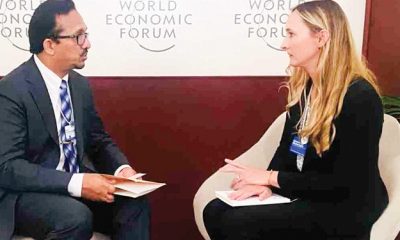
 Features4 days ago
Features4 days agoHandunnetti and Colonial Shackles of English in Sri Lanka
-
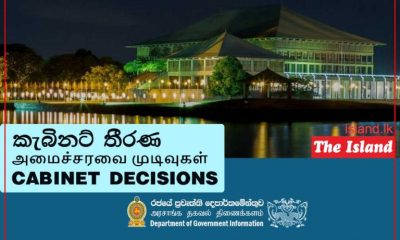
 Business3 days ago
Business3 days agoCabinet approves establishment of two 50 MW wind power stations in Mullikulum, Mannar region
-

 Business6 days ago
Business6 days agoSri Lanka betting its tourism future on cold, hard numbers
-

 News6 days ago
News6 days agoNew landslide alerts as Ditwah aftermath worsens


